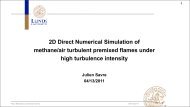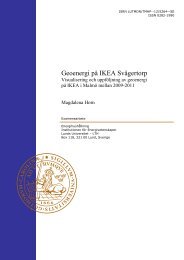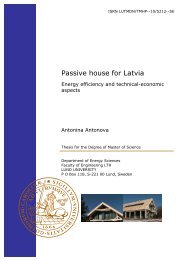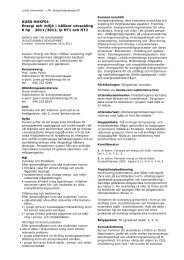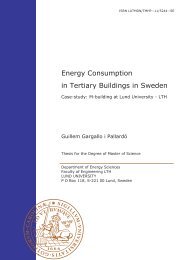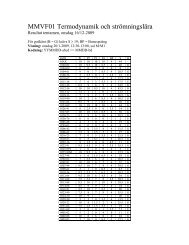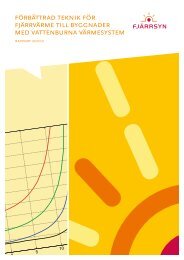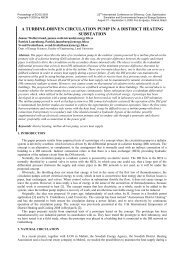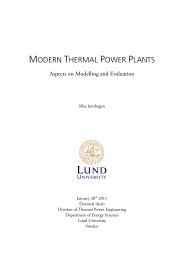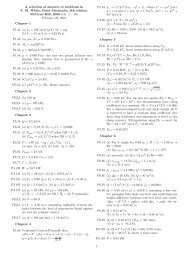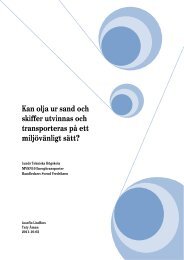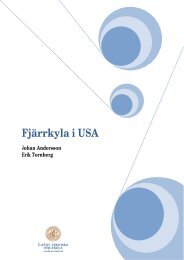Thesis for degree: Licentiate of Engineering
Thesis for degree: Licentiate of Engineering
Thesis for degree: Licentiate of Engineering
You also want an ePaper? Increase the reach of your titles
YUMPU automatically turns print PDFs into web optimized ePapers that Google loves.
eactions are safely fulfilled. This is a good verification <strong>of</strong> the chosen parameters <strong>for</strong> the<br />
computational model examined in previous studies.<br />
However, it is interesting to reflect over which parameters can <strong>for</strong>m a potential risk <strong>for</strong><br />
limiting the transport processes. For the heat transport at all the domains, a larger enthalpy<br />
change or an increased reaction rate can increase the risk. Also, a lowering <strong>of</strong> the temperature<br />
can cause an increased risk but this is less significant. For the mass transport, an increased<br />
reaction rate or a decreased concentration <strong>of</strong> reactant can cause a higher risk. As mentioned<br />
be<strong>for</strong>e the effectiveness factor is affected by the characteristic dimensions <strong>of</strong> the particle<br />
which can also be confirmed here. If a change in particle diameter causes a change in the<br />
reaction rate, this may have a strong influence on the transport processes [6].<br />
To summarize, the elimination <strong>of</strong> transport gradients which limit the reaction and catalytic<br />
kinetics is complex to study. This case study, by tools to assess the transport limiting issues,<br />
seeks to locate the limiting sources and improve these <strong>for</strong> the desired outcome. The reaction<br />
rate is the most direct risk <strong>for</strong> limitation on the transport processes. If the reaction rate is<br />
increased it will affect every criterion in the analysis and can cause severe gradients which<br />
will create transport limitations. The anode and cathode structure and catalytic characteristics<br />
have an impact on the reaction rates, especially on the steam re<strong>for</strong>ming reaction, which will in<br />
turn affect the cell per<strong>for</strong>mance.<br />
4.3 Macroscale model by CFD<br />
A two-dimensional model <strong>for</strong> an anode-supported SOFC has been developed and<br />
implemented in the commercial s<strong>of</strong>tware COMSOL Multiphysics (version 3.5a). Equations<br />
<strong>for</strong> momentum, mass and heat transport are solved simultaneously. The cell geometry and<br />
SOFC operating parameters are defined in Table 4.3. It should be mentioned that this<br />
macroscale model is 2D only, and the connection between the electrodes and interconnect<br />
cannot be explicitly observed in this case.<br />
4.3.1 Case study: Internal re<strong>for</strong>ming reaction rates<br />
The flow direction is set to be from left to right <strong>for</strong> air and fuel channels as well as the anode<br />
and the cathode. It is also possible with counter flow but this is not included in this study. It<br />
should be explicitly mentioned that the length <strong>of</strong> the cell is 100 times longer than the height <strong>of</strong><br />
the air or the fuel channel.<br />
43



